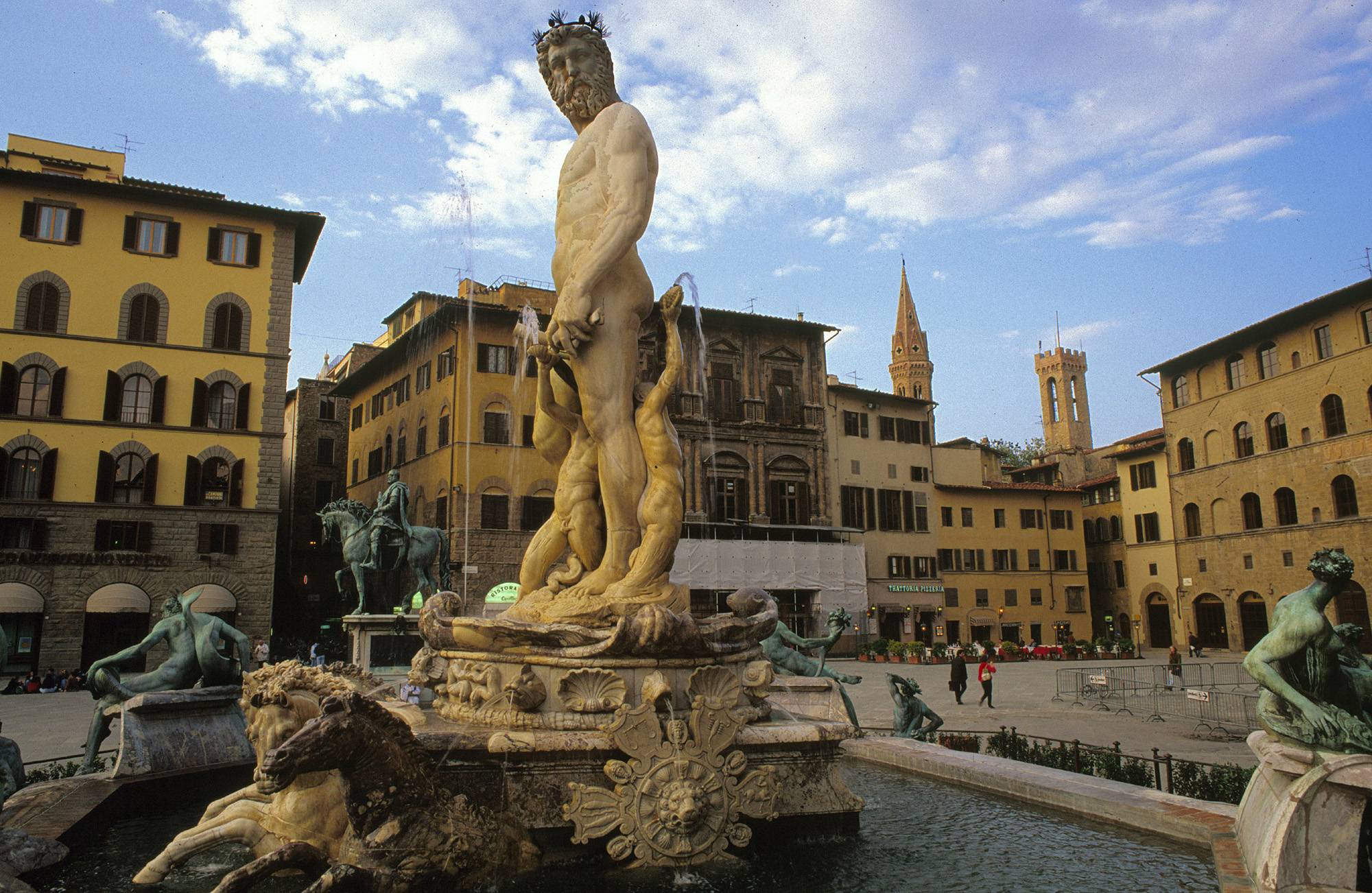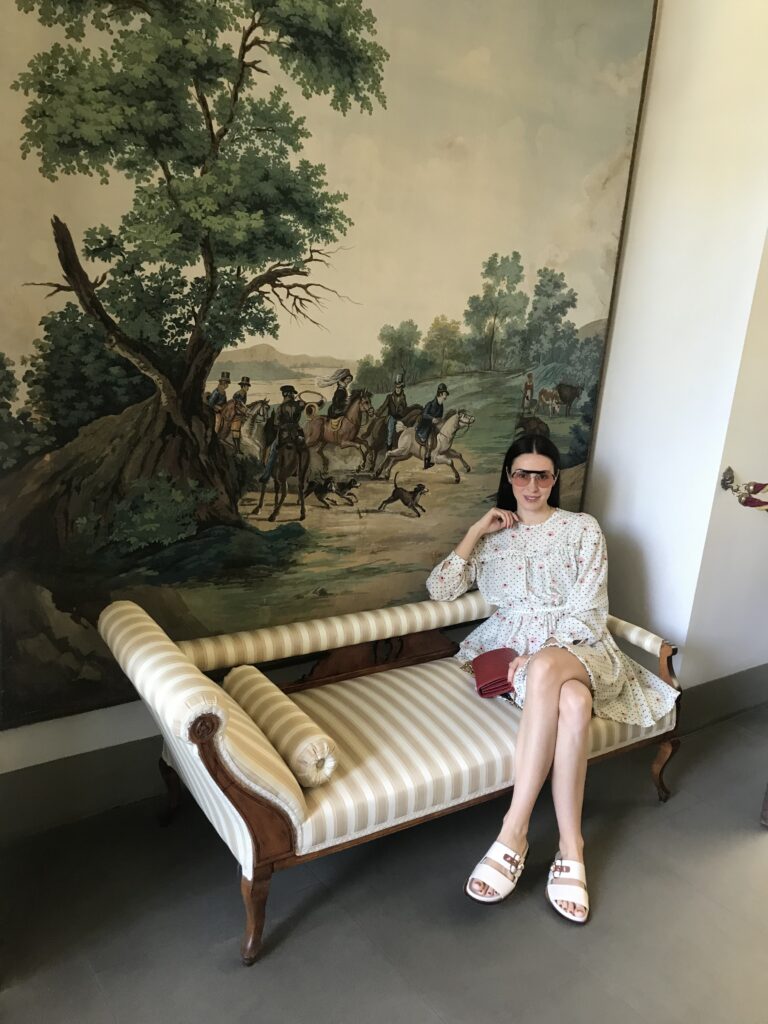Symbol of the Florentine Republic
The Piazza della Signoria has been the center of political life in Florence since the 14th century with the prominent Palazzo Vecchio overlooking the square. It was the scene of great triumphs, such as the return of the Medici in 1530 as well as the Bonfire of the Vanities instigated by Savonarola, who was then himself burned at the stake here in 1498 after he was denounced by the Inquisition as a heretic. A marble circle inscription on the piazza shows the location where he was burned. The sculptures in Piazza della Signoria bristle with political connotations, many of which are fiercely contradictory. The David (the original is in the Galleria dell’Accademia) by Michelangelo was placed outside the Palazzo Vecchio as a symbol of the Republic’s defiance of the tyrannical Medici. Bandinelli’s Hercules and Cacus (1534) to the right of the David was appropriated by the Medici to show their physical power after their return from exile. The Nettuno (1575) by Ammannati celebrates the Medici’s maritime ambitions and Giambologna’s equestrian statue of Duke Cosimo I (1595) is an elegant portrait of the man who brought all of Tuscany under the Medici military rule. [Update April, 2019] After two long years of restoration, the original splendor of the fountain has returned and it will be impossible to not admire it from up close walking through the Piazza.


